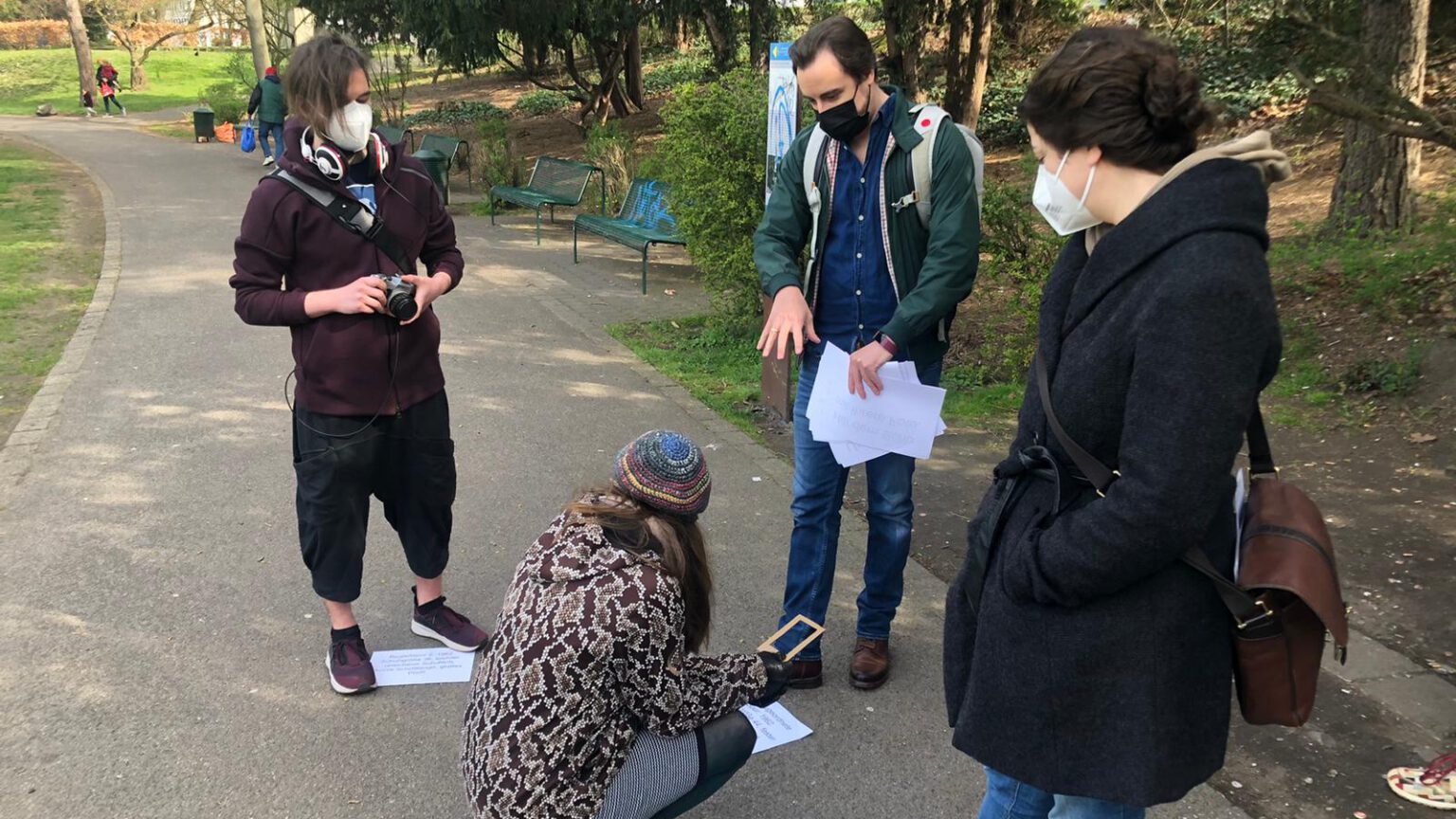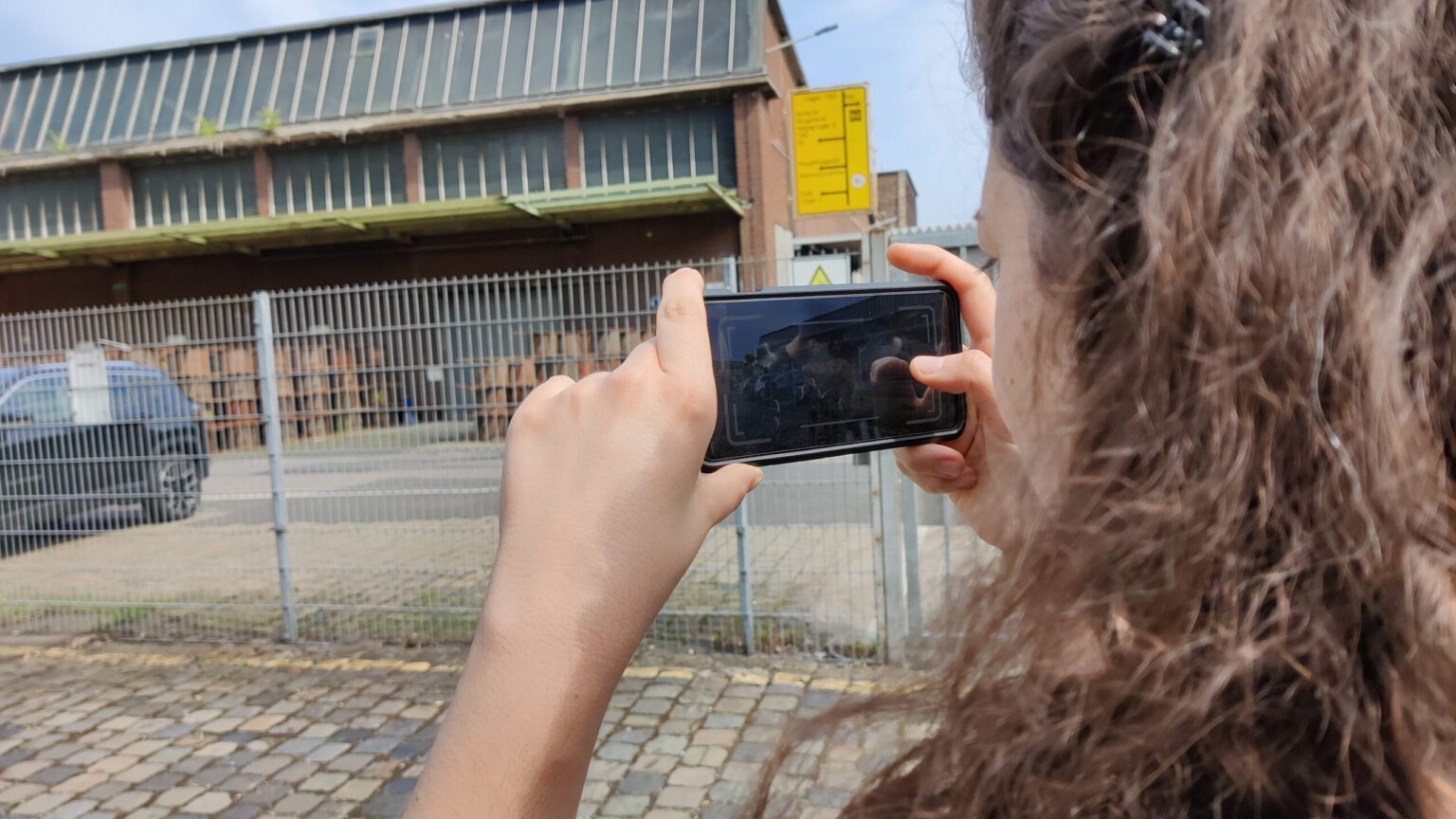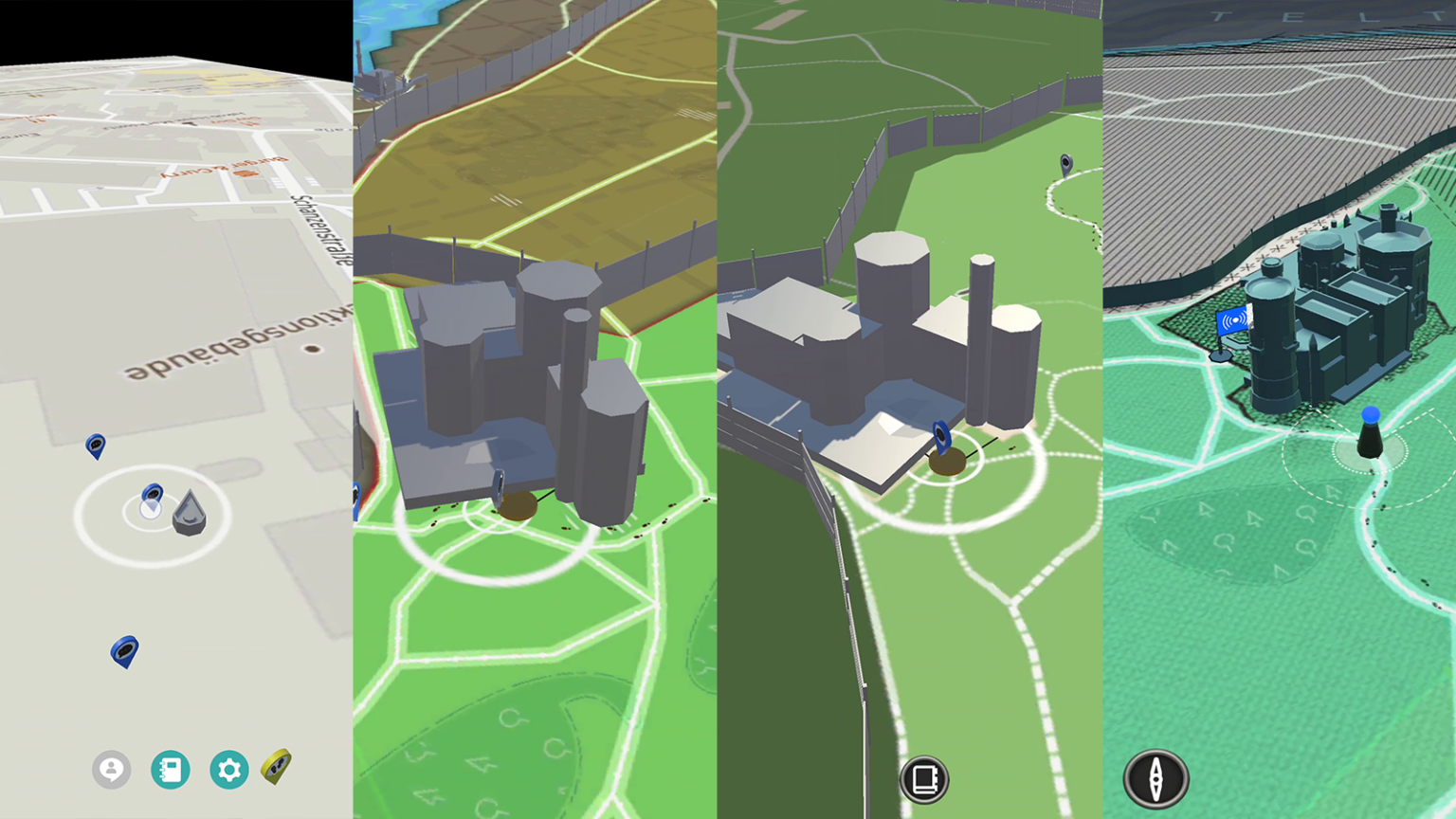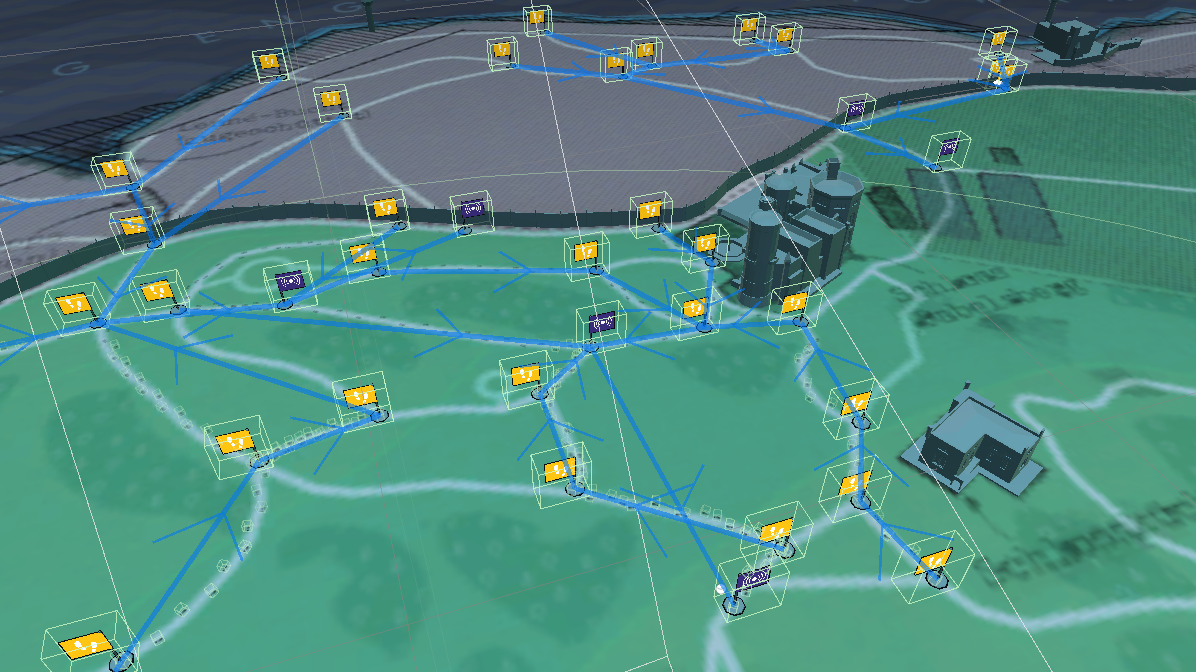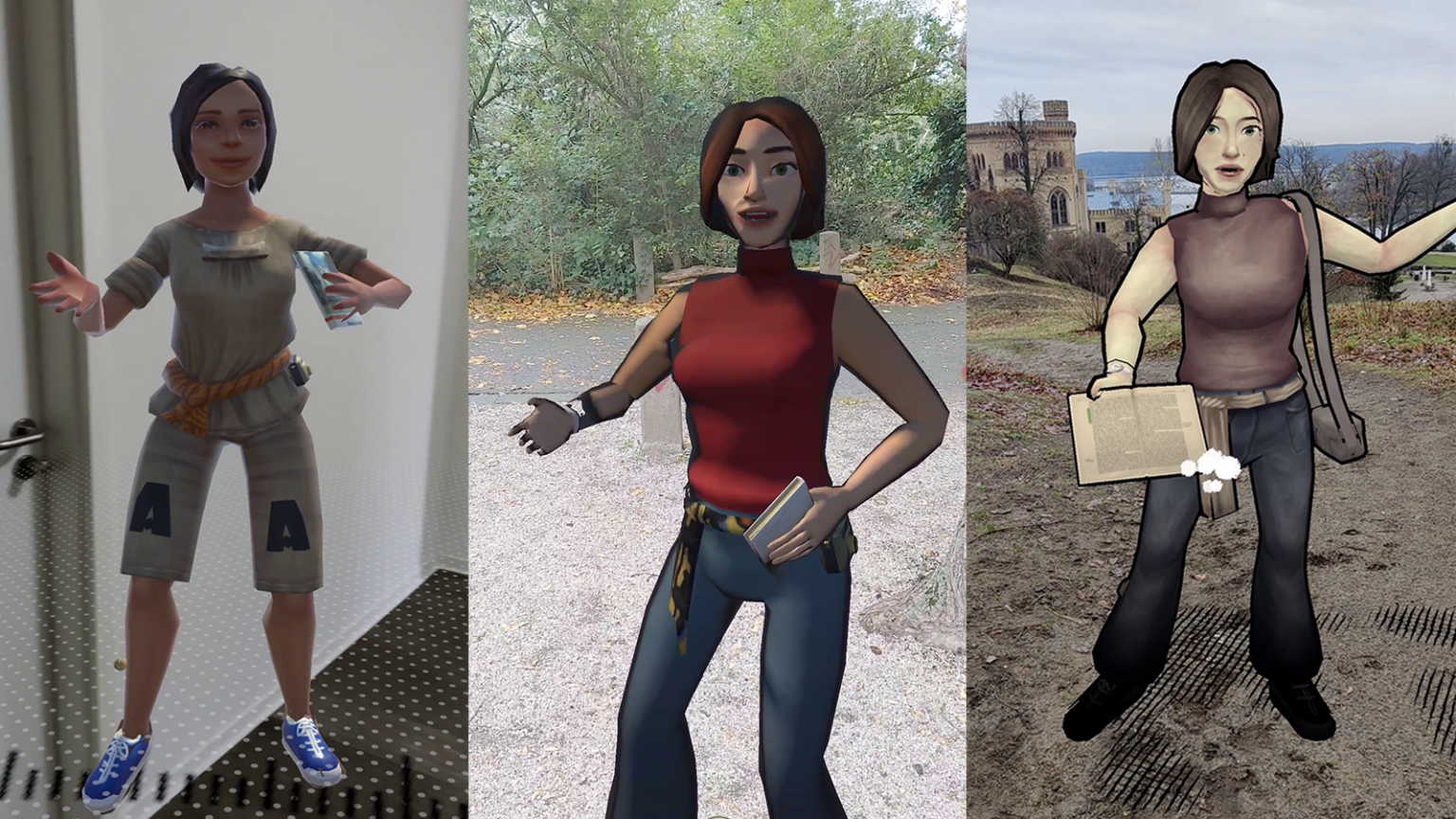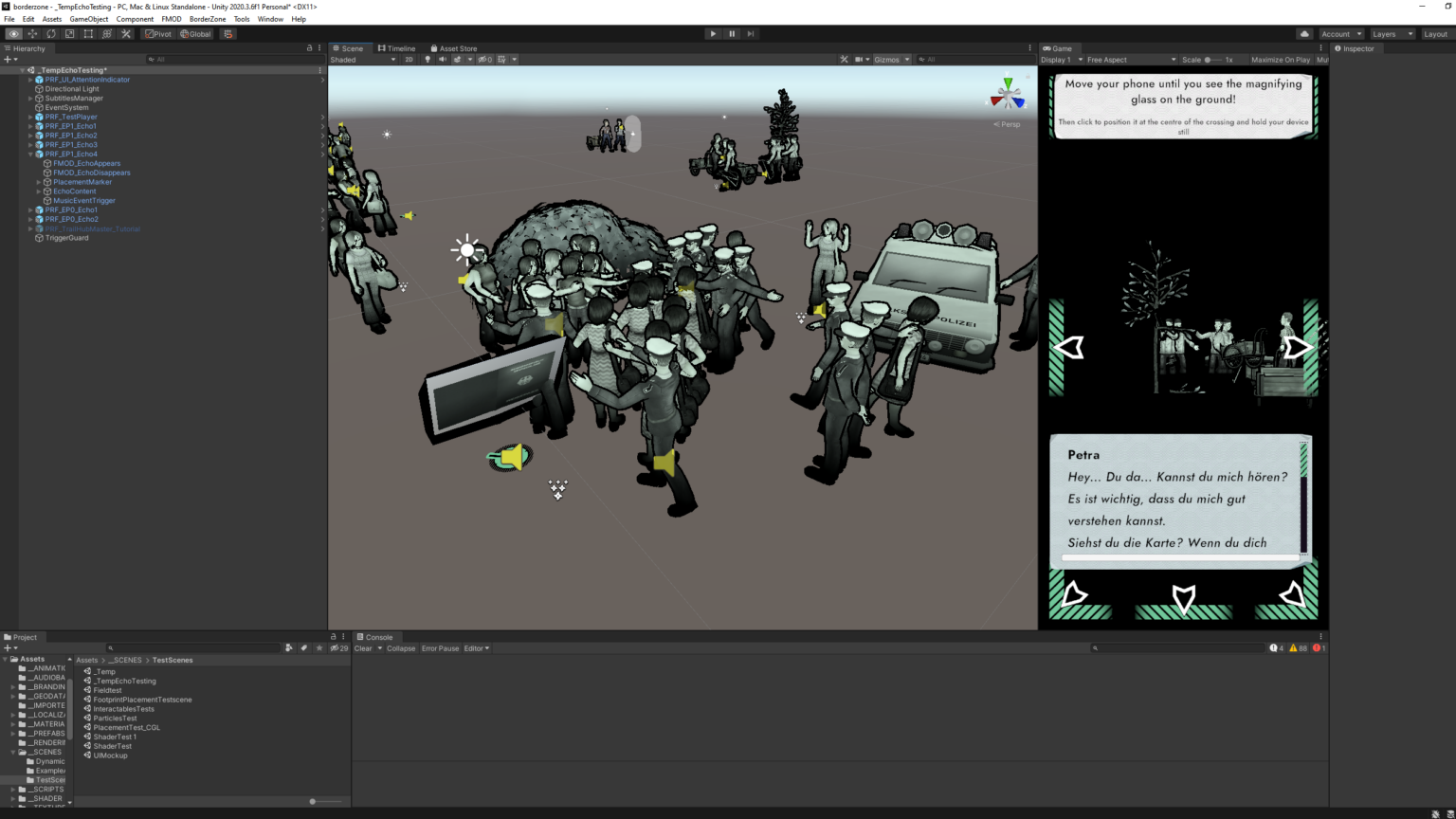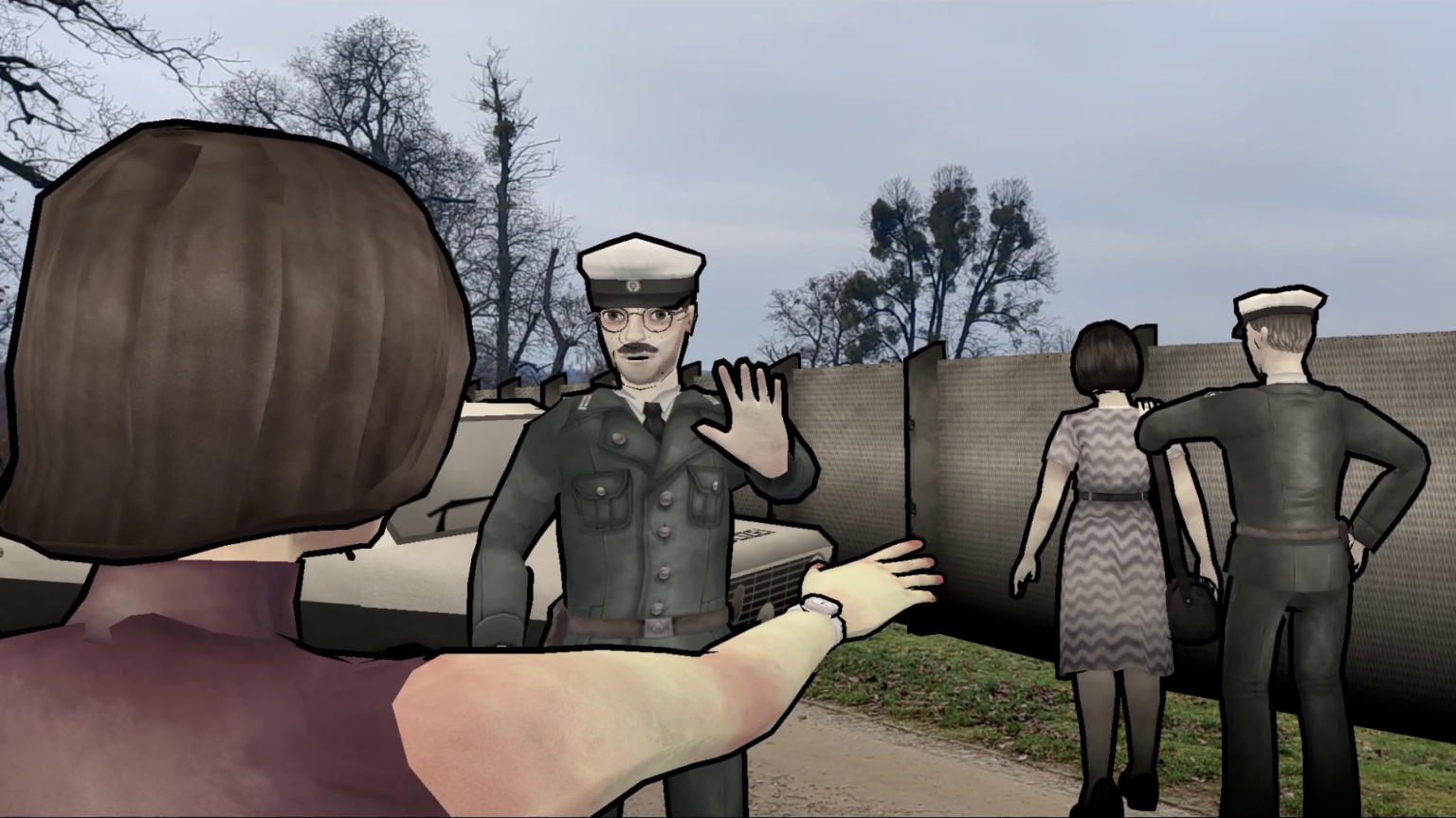Cologne Game lab // ReleasED
Border Zone
Location-based AR App for Android and iOS
In cooperation with Stiftung Preußische Schlösser und Gärten the Cologne Game Lab developed a location-based mobile app for Park Babelsberg, a former site of the Inner German border. Take a step into the past, reenact stories in AR and learn about German history as you go!
FACT SHEET
- Type Research Project
- Genre Location-Based AR Experience
- Tools Unity, Git, OpenStreetMap, Fmod, Scrum
- Platform Android and iOS
- Timeframe 10 months
- Release April 2022
- Team 15
KEY ACCOMPLISHMENTS
- creation of immersive storytelling mechanics for mobile AR
- remote development of a location-based application
- working with and organizing a big design team
LINKS
THE PROJECT
Funded by Neustart Kultur, SPSG and CGL cooperated to realize an application that should make the history of Park Babelsberg visible for its visitors. Park Babelsberg and the small castle therein were once built as a residence for Emperor William I and his wife Augusta.
However, sharing its borders with West Berlin, a lot of its beauty and architecture were destroyed when the German Border was built along its riverside.
Meanwhile, a lot of its former vision has been restored, but the past should not be forgotten.
In Border Zone, players can navigate the park via a live map and go to specific spots to find traces of the past. When choosing to follow these traces, they are led to points in the park where a short interactive story will reveal itself. Players will have to follow the protagonist of the story through the park in order to reveal the outcome of the narrative.
LEARNING WITH STORIES
The main goal of the concept was to recreate scenes from history at real locations in the park. The stories told should have an educational impact on the players, teaching them about the former GDR (German Democratic Republic) and addressing specific learning goals.
A major challenge that we ran into and which a lot of historical games are struggling with, is the one of historical accuracy.
Although being provided with a lot of photographic material and witness reports from the time and doing our research, a time machine has not been built yet. We agreed on writing a story that was inspired by a real event that took place in the park but exchanging the characters and the outcomes of the situation in order to maintain our creative freedom. The result is a story that should give people a feeling about the general atmosphere in the former GDR and the sort of events that could easily happen if you didn’t comply.
We had the script reviewed several times, but it is still a delicate topic and it was important to us to be respectful to contemporary witnesses and victims.
TECHNICAL LIMITATIONS
Our first concept imagined the AR gameplay in the park to be much more dynamic. Footsteps of former visitors could be found everywhere and be followed in AR freely, while the positions of buildings and paths were considered in the tracking and included in scenes.
However, we had to realise that AR technology is just not there yet. Especially not when building an app that should be playable on as many mobile devices as possible and which takes place outside in a park – an environment that’s subject to constant change. We considered installing Bluetooth trackers, but that would have limited the experience to very specific locations.
Instead we successfully accommodated for the technical limitations with design solutions by rearranging and abstracting our original gameplay ideas.
ORGANIZING TEAMWORK
Since I was the designer with the most hours in the project, it naturally became my job to keep track of things. I worked closely with the programmers since we were the core team of people that were still coming to the office, so I was the first one to use and test new systems once they were implemented.
Managing the design tasks and distributing them when needed was assisted well by the agile project management.
CHALLENGES OF THE PANDEMIC
Creating a game that could only be played on-location from across the country was certainly a challenge. We created our own testing grounds at our office in Cologne but emulating the GPS positions could only take us so far. We visited Potsdam several times to test the game in the park and it helped to identify the biggest problems, but nevertheless proper testing was one of our biggest challenges in this project.
With travel restrictions and almost everybody working from home, this was even more tricky. Not everyone had a suitable test device, and some home offices were too small to test the AR scenes.
Considering the time we had and the challenges we faced, I think that we delivered a great blueprint for an extremely innovative gameplay idea that could be adapted for on-location history teaching in many other places.
BEHIND THE SCENES
